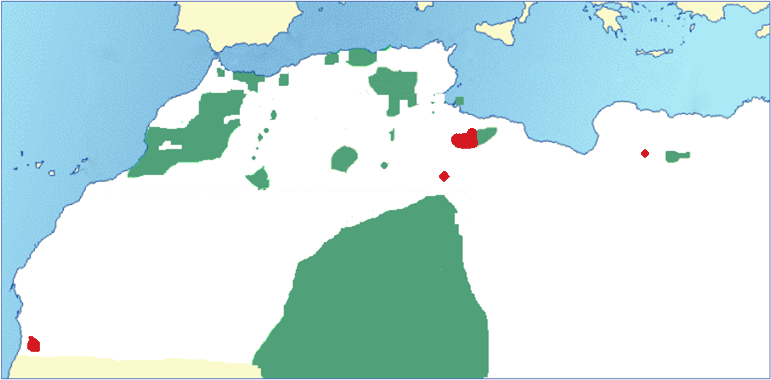
I am very proud of my collection of modern literature in #Tarifiyt (#Tarifit, #amazigh).
Therefore a thread on Tarifiyt literature in the Netherlands.
Therefore a thread on Tarifiyt literature in the Netherlands.

1993 was the year that the first books with modern literature in Tarifiyt were published.
One was a collection of poems by Salam Essemghini published in Morocco.
One was a collection of poems by Salam Essemghini published in Morocco.

The other one was a collection of poems by Ahmad Ziani, published in the Netherlands. The edition was carried out, in close collaboration with the poet, by Roel Otten from Utrecht University, who also provided a beautiful translation into Dutch. 

Otten would be instrumental in publishing and translating a number of other works by Tarifiyt poets, such as Ziani, Ahmad Essadki and Mimoun Eloualid.
But other writers and editors would also step in, publishing monolingual short stories, like the two 1996 books below:

But other writers and editors would also step in, publishing monolingual short stories, like the two 1996 books below:


Many of these editions were carried out by Stichting Izaouran, which was mainly the work of the well-known refugee poet Mohamed Chacha. (photo amazightimes.nl) 

From the mid 1990s until his death in 2016 (and even posthumously) he published numerous books, many written by himself. Chacha can be considered the first serious prose writer in Tarifiyt. All books are in Tarifiyt only. 

Meanwhile, a big production of written literature in Tarifiyt came into being in Morocco, among others by the editor Trifagraph (but also by others). Thus lots of books and booklets with prose and poetry were published. There are many many many more than the four below: 

Production in the Netherlands also kept going, and some really beautiful books came out, like bilingual collections of poetry by Ali Amazigh (edited and translated by my Leiden colleague Khalid Mourigh) and by Mimoun Essahraoui. 

Most publications in Tarifiyt are either poetry or prose fiction - lots of short stories and a couple of longer works. But there is also a non-fiction analysis of traditional poetry by Mohamed Chacha ("The road to the couplets"). 

And finally my personal favorite: an autobiographical piece by Ali Amazigh, where he tells the story of his childhood in a village on the outskirts of Nador from his earliest memories until his late teens, when his family joined his father in the Netherlands. 

Nowadays, the production of literary works in Tarifiyt is booming, especially in Morocco. In spite of a lack of institutional support (only Standard Amazigh is recognized), the language and its cultural production are well alive!
Kemmregh.
Tqadgh-awent/awem!
Kemmregh.
Tqadgh-awent/awem!
• • •
Missing some Tweet in this thread? You can try to
force a refresh




